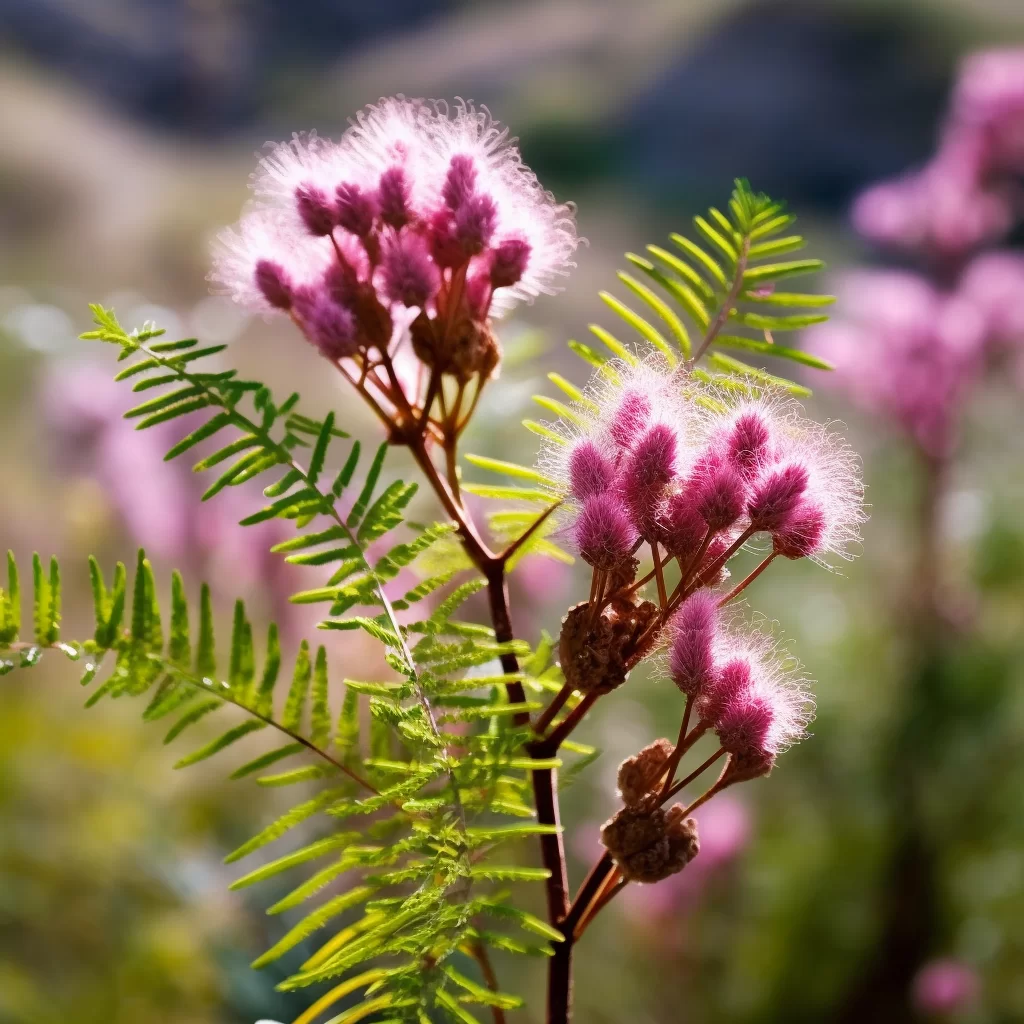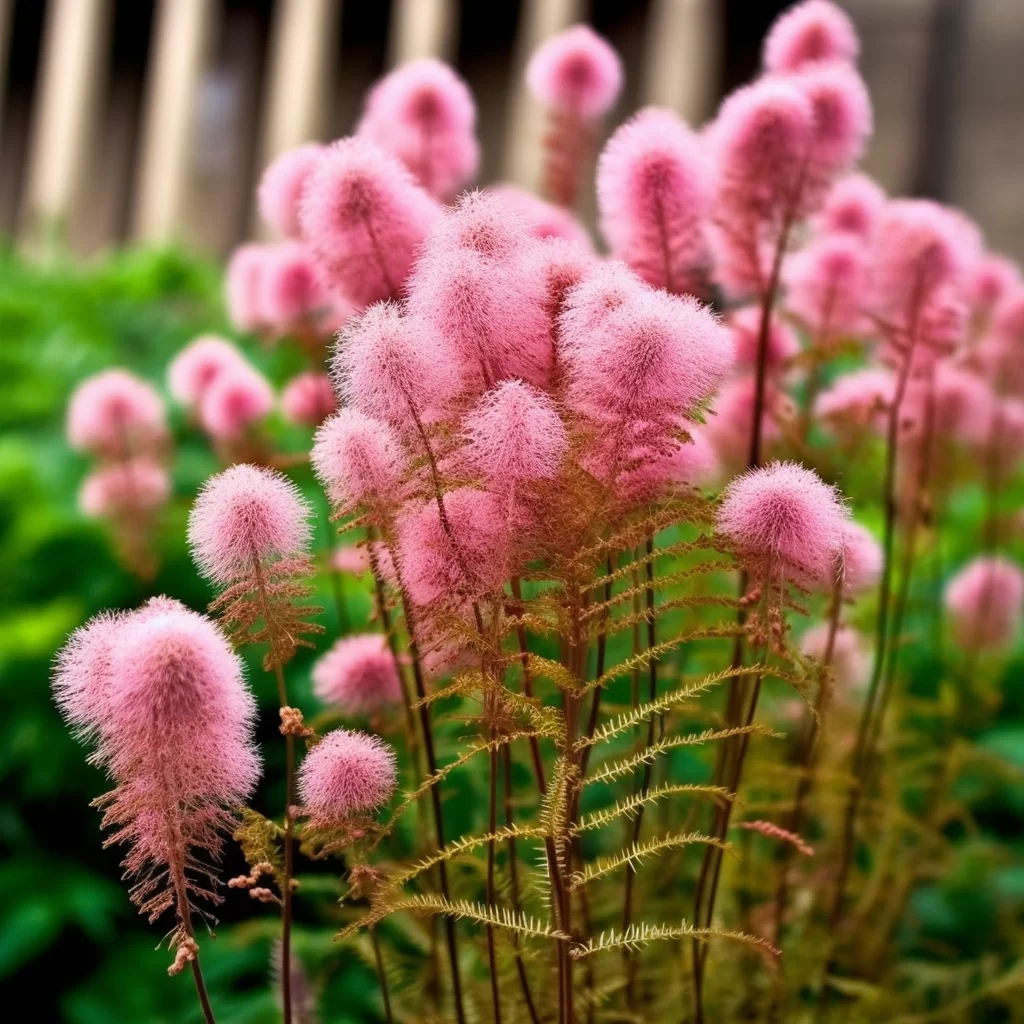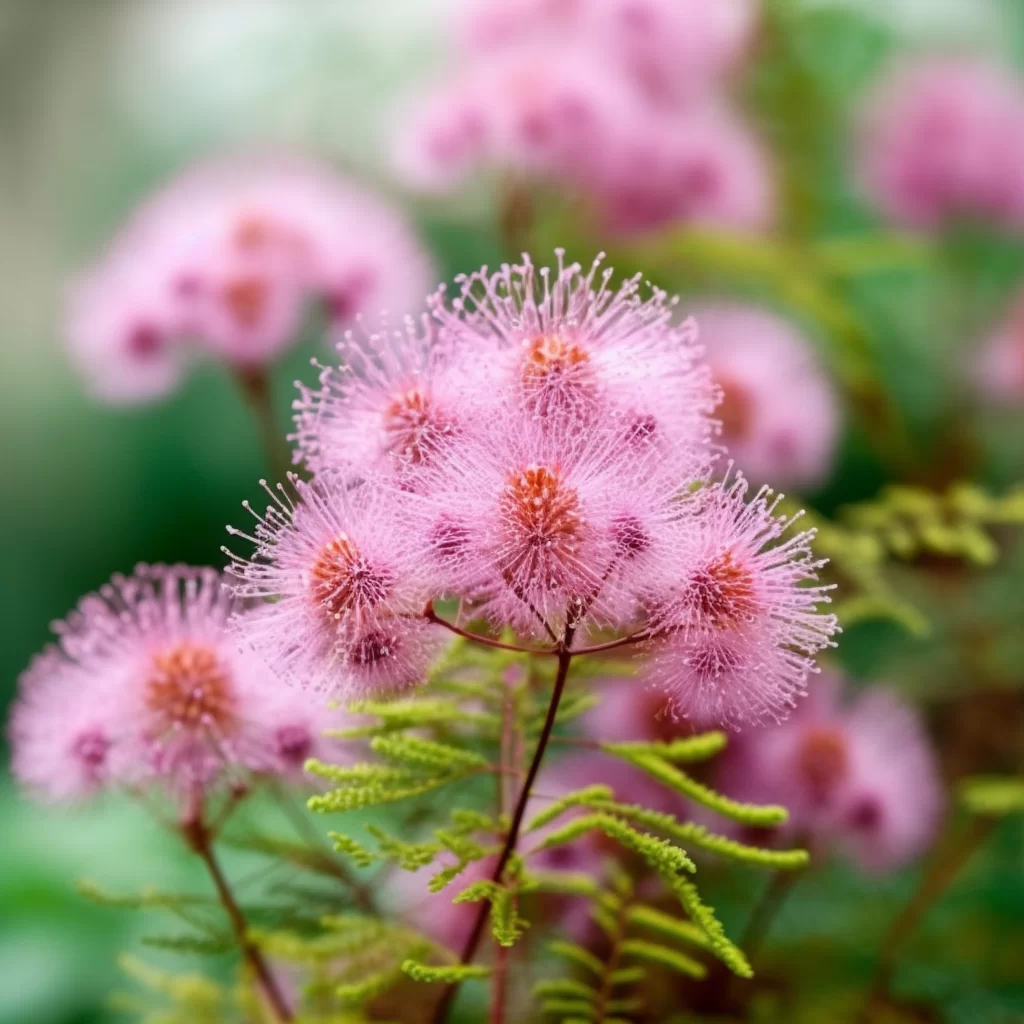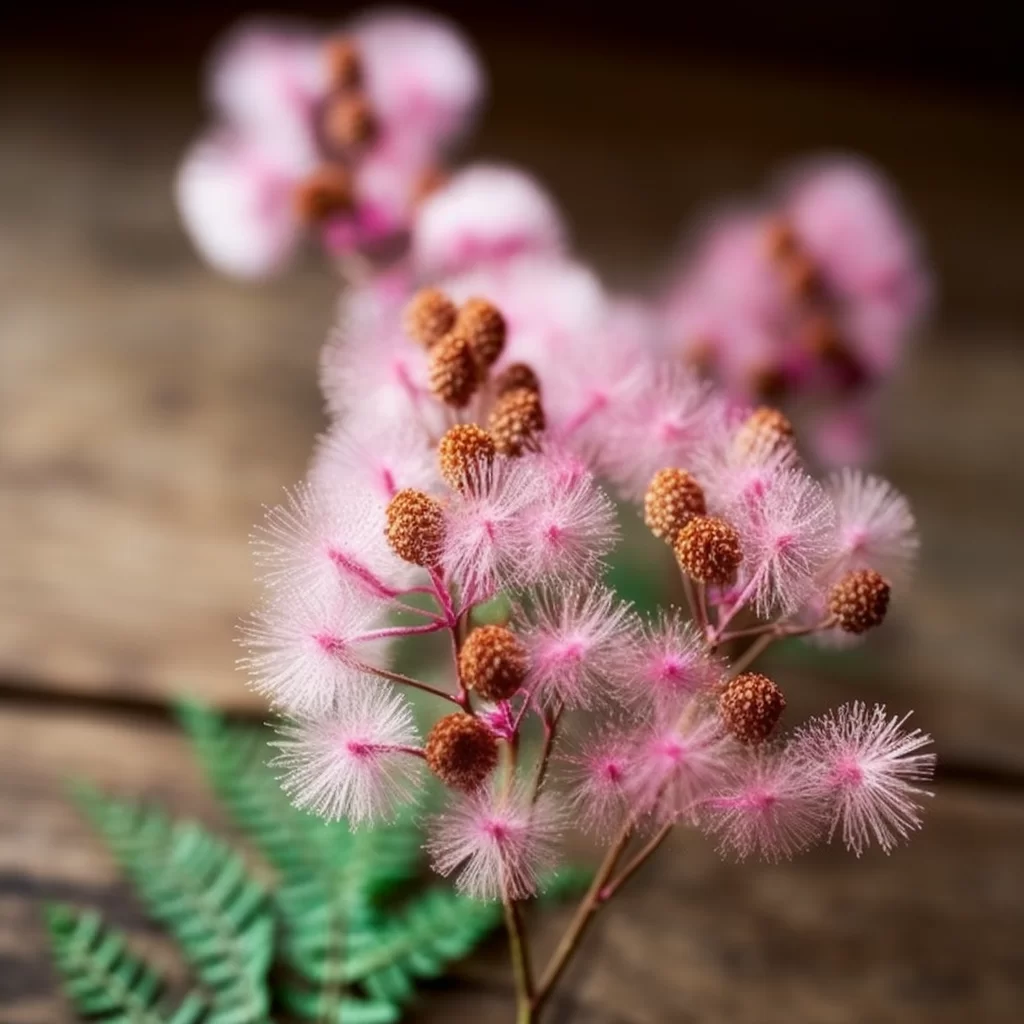Story of Day :
Contents
MIMOSA PUDICA PLANT : COMPLETE GUIDE AND CARE TIPS
If you’re on the hunt for an indoor plant that requires minimal upkeep, yet still adds a touch of beauty and intrigue to your space, consider the Mimosa pudica plant.
This amazing little plant is often called the “sensitive plant” due to its ability to close up its leaves when touched.
But there’s much more to this captivating botanical specimen than just its responsive foliage! With proper care, your Mimosa pudica can flourish and delight you with not only its unique leaf movements but also with charming pink pom-pom-like flowers.Caring for a Mimosa pudica is easy as long as you follow a few simple guidelines.
First off, make sure it has enough light – bright but indirect sunlight is best – and don’t overwater it; let the soil dry out slightly between watering sessions.
A low-nitrogen fertilizer every month or so will help keep your plant healthy and thriving.
And don’t forget to give it some love by lightly touching its leaves from time to time to see them fold up in response! With just a bit of attention and TLC, your Mimosa pudica will become an integral part of your home decor that keeps on giving!
What Is a Mimosa Pudica Plant?
The Mimosa pudica is a fascinating plant that belongs to the legume family and originally hails from Central and South America.
It is known for its unique fern-like leaves, which are extremely sensitive to touch or any kind of movement.
When stimulated, the leaves fold up in response, creating a beautiful display of nature’s reaction to external stimuli.
Apart from its sensitivity, this plant produces small pink or purple flowers that bloom during summer and autumn.
With all these features combined together, it makes for an excellent conversation piece and a delightful houseplant. The Mimosa pudica is truly an interesting species that can captivate anyone with its peculiar abilities.
The Mimosa pudica is truly an interesting species that can captivate anyone with its peculiar abilities.
This sensitive plant boasts delicate foliage that feels almost like feathers when touched gently – but if you tickle or brush against them aggressively enough they will quickly close up! The Mimosa pudica also blooms with small yet vibrant flowers in the warmer months of the year adding even more beauty to this already captivating houseplant.
Not only does it make for a great addition to any home decor but observing how it reacts to different stimuli can be both educational and entertaining as well!
How Do You Take Care of a Mimosa Pudica Plant?
If you’re someone who loves to have indoor plants in your living space, then you should definitely consider getting a Mimosa pudica.
These plants are known for their unique characteristic of closing their leaves when they’re touched or shaken.
But apart from that, taking care of them is pretty easy and requires only basic maintenance like any other houseplant.
You can keep them indoors by providing moderate sunlight and watering them once a week or whenever the soil feels dry.
The best part about these plants is that they don’t require any special soil or fertilizers to thrive; they’ll do just fine with the regular potting mix.Mimosa pudicas are not just low-maintenance but also come with some impressive benefits for your health and wellbeing.
They help purify the air by removing toxins like benzene, formaldehyde, and xylene from the environment, which makes it easier for you to breathe fresher air indoors.
Moreover, studies suggest that interacting with indoor plants like Mimosa pudicas can help reduce stress levels, boost mood and cognitive function while enhancing productivity at work or home.
Hence investing in one of these gorgeous little wonders is definitely worth it!

- Light: The mimosa needs bright sunlight but can also tolerate some shade.
- Water: Mimosas prefer moist soil but do not like standing water; water sparingly, allowing soil surface dryness between watering.
- Fertilizer: You can fertilize your mimosa once every month using balanced liquid fertilizer during growing season (spring-summer).
- Pests and Diseases: Mimosa pudicas are not prone to pests and diseases, but it is still important to keep an eye out for spider mites, aphids, and mealybugs.
How Do You Propagate a Mimosa Pudica Plant?
If you’re interested in growing your own mimosa pudica plant, there are two ways to propagate it: seed germination or cuttings.
Seed germination requires planting the seeds in a suitable potting mix and keeping them moist until they sprout.
Cuttings, on the other hand, involve taking a stem from an existing plant and placing it in water or soil until roots form.While both methods can be successful, some gardeners prefer cuttings because they produce identical replicas of the parent plant more quickly than seeds.
However, if you’re patient and want to watch the entire growth cycle of your mimosa pudica from seed to maturity, then going the seed route might be more satisfying for you.
Whichever method you choose, remember that this unique plant with its sensitive leaves and pretty pink flowers is sure to add a charming touch to any indoor or outdoor space!

- Seed Germination: The seeds of the mimosa have a hard outer shell that must be nicked or soaked in warm water overnight before planting.
Once planted in soil and kept moist with regular watering, they will sprout within two weeks.
- Cuttings: You can also propagate your Mimosa pudica by taking stem cuttings from the parent plant.
Cut healthy stems with at least one node (where leaves attach) and plant them in moist soil.
Fun Facts About Mimosa Pudica Plants
For those who love sharing interesting information with others, there are some fascinating facts to discover about this one-of-a-kind houseplant.
Whether you’re a seasoned plant enthusiast or just starting out on your green-thumb journey, these tidbits are sure to impress.
From its unique shape and texture to its diverse range of colors and varieties, this plant is truly something special.Did you know that this particular species has been cherished for centuries as a symbol of peace, tranquility, and good luck? Or that it has even been used in traditional medicine practices around the world? As you explore the many wonders of this remarkable houseplant, be sure to share your discoveries with others – they might just inspire a newfound appreciation for all things botanical!

- The sensitive leaves of the mimosa pudica help protect it against herbivores.
- Mimosa has been used in traditional medicine for its anti-inflammatory properties.
- In some countries such as India, it is considered an invasive weed due to its ability to spread quickly once established outside its natural habitat.
Conclusion
Mimosa Pudicas are a type of indoor plant that can bring the tropics to your home.
These plants are popular for their unique ability to react to touch – when stimulated, they quickly close their leaves as if they’re shy! This makes them an excellent choice for families with children who would love to experience this sensory wonder.
Not only do they provide entertainment, but Mimosa Pudicas also require easy maintenance.
By simply ensuring the proper amount of sunlight exposure, a regular watering schedule, balanced fertilizer and controlling pests – you can keep your Mimosa Pudica healthy and thriving.Beyond the joyous tactile experience offered by these plants, Mimosa Pudicas’ bright green leaves and delicate pink flowers bring nature’s beauty indoors.
They’re perfect for livening up dull corners of a room or adding a fresh touch to any space in need of some vibrancy.
Whether you’re looking for an easy-care houseplant or want something that will delight both adults and kids alike, these tropical wonders are definitely worth considering!
If you’re someone who loves plants or is just starting on your gardening journey, the Mimosa pudica plant is an ideal choice to add some unique greenery to your home.
This plant’s standout feature is its leaves that fold up when touched, earning it the nickname “shy plant” or “touch-me-not.” Apart from being a conversation starter, the Mimosa pudica is relatively low maintenance and can thrive in bright indirect light and moderate humidity.
Its delicate pink flowers add a pop of color that can elevate any room’s aesthetic.
So why not give it a try today and see for yourself what all the fuss about this fascinating plant is?The Mimosa pudica is also ideal for people who may not have much experience caring for plants as it requires minimal attention but still offers an impressive visual impact.
It can be grown indoors or outdoors in warm climates and doesn’t require much watering or fertilization to flourish.
You could even involve kids in gardening by planting these unique plants with them as they react when touched, providing an interactive learning experience.
Additionally, research suggests that having indoor plants like Mimosa pudica can help improve air quality and reduce stress levels among other health benefits making it a great addition to any space you spend time in daily!